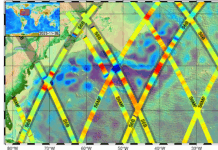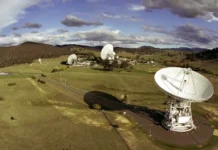NASA’s Initiative to Assess Decompression Sickness Risks in Spaceflight
In June 2024, the NASA Office of the Chief Health and Medical Officer (OCHMO) Standards Team organized an independent assessment working group. The mission was to evaluate the current status and progress of research and clinical initiatives aimed at reducing the risk of decompression sickness (DCS) related to patent foramen ovale (PFO) during space missions and associated ground tests.
Decompression sickness, often referred to as "the bends," is a condition that arises from dissolved gases, mainly nitrogen, forming bubbles in the bloodstream and tissues. This typically occurs during rapid decreases in ambient pressure, such as experienced by scuba divers, high-altitude aviators, or those in pressurized environments. These gas bubbles can obstruct blood vessels, cause inflammation, and damage tissues, manifesting in a range of symptoms classified by NASA into two types. Type I DCS is less severe and generally causes musculoskeletal pain or skin rash. In contrast, Type II DCS is more severe, often affecting neurological functions, the inner ear, and cardiopulmonary systems. The risk of DCS becomes significant during extravehicular activities (EVAs), where astronauts perform tasks outside their spacecraft in pressurized suits that operate at lower pressures than the spacecraft itself.
NASA has implemented various DCS mitigation protocols. These involve strategies to reduce systemic nitrogen load through a combination of habitat environmental parameters, EVA suit pressure, and specific breathing gas procedures known as prebreathe protocols. These measures are intended to ensure safe and effective mission operations. However, the complete pathophysiology of DCS isn’t entirely understood, as incidents occur even when gas bubbles aren’t detected. One potential mechanism involves Patent Foramen Ovale (PFO).
Understanding Patent Foramen Ovale (PFO)
A PFO is a small opening between the right and left atria of the heart, a remnant from fetal development. After birth, increased pressure in the left atrium usually forces the inter-septal valve to seal, with fibrous adhesions permanently closing the septum within the first two years of life. While most PFOs close naturally, about 25% of the population retains an open PFO, and approximately 6% have a notably large PFO (greater than 2 mm). With age, the diameter of a PFO can increase. The primary concern with PFOs is that they allow venous emboli gas to bypass the lungs’ filtration process, which normally prevents such bubbles from entering the arterial system. If bubbles reach the arterial circulation, they can potentially cause neurological events, such as strokes. Activities that increase venous pressure, like the Valsalva maneuver or abdominal compression, can exacerbate the risk of emboli crossing a PFO.
The Working Group’s Objectives
The working group aimed to scrutinize the current research and clinical activities designed to alleviate the risk of PFO and DCS issues during space missions. Identified cases of DCS during NASA’s ground testing in pressurized chambers highlighted the need for an external review. The group’s primary objectives included:
- Quantifying any increased risk associated with PFOs during decompression protocols used in ground testing and spaceflight EVAs, and during unplanned decompressions, like cabin depressurization or EVA suit leaks.
- Evaluating the risks and benefits of screening astronaut candidates, current crew members, and test subjects for PFOs.
- Identifying potential risk reduction measures for individuals deemed at increased risk of DCS due to a PFO.
- Recommending research and technology developments to help mitigate PFO-related DCS risks.
Contributions and Insights from the Working Group
The working group convened over two days at NASA’s Johnson Space Center. It comprised NASA experts and stakeholders, alongside invited external reviewers from cardiology, hypobaric medicine, spaceflight medicine, and military occupational health. Participants examined past reports and evidence relating to PFOs and DCS risk, reviewed NASA’s current experiences, and discussed case studies and decision-making processes. The event concluded with an open forum where recommendations for current and future practices were discussed and summarized in a report available on NASA’s OCHMO Standards Team website.
Key Findings
The independent assessment yielded several critical insights:
- Exclusion of Individuals with PFO:
In high-risk scenarios, excluding individuals with a PFO does not necessarily eliminate the risk of DCS. While it may slightly reduce overall risk, it does not make the environment entirely safe, as other physiological factors significantly contribute to DCS risk. - PFO Screening Not Recommended:
Based on current evidence and NASA’s decompression protocols, screening for PFOs is not recommended for spaceflight or ground testing participants. Instead, the focus should be on creating a safe environment through effective prebreathe protocols and rapid DCS treatment capabilities. - No Immediate Need for Further PFO Research:
Given the low risk and existing safety protocols, no specific research is currently required to further explore the relationship between PFOs, DCS, and altitude exposure. - Ensuring Treatment Capability:
In engineering protocols conducted on the ground, the same level of treatment capability, such as having a treatment chamber nearby, should be ensured as in research protocols. Immediate DCS treatment is crucial for test subject safety.Conclusion and Future Implications
The comprehensive summary report from the working group includes detailed background information, discussion points, and conclusions. These findings will inform key stakeholders in making decisions for future ground testing and spaceflight operations. The overarching goal remains to protect crew health and safety, ensuring mission success.
For more detailed insights and technical information, you can refer to NASA’s official documentation and reports available on their website. These documents provide an in-depth look at the strategies and considerations involved in mitigating DCS risks in spaceflight environments.
For more Information, Refer to this article.


































